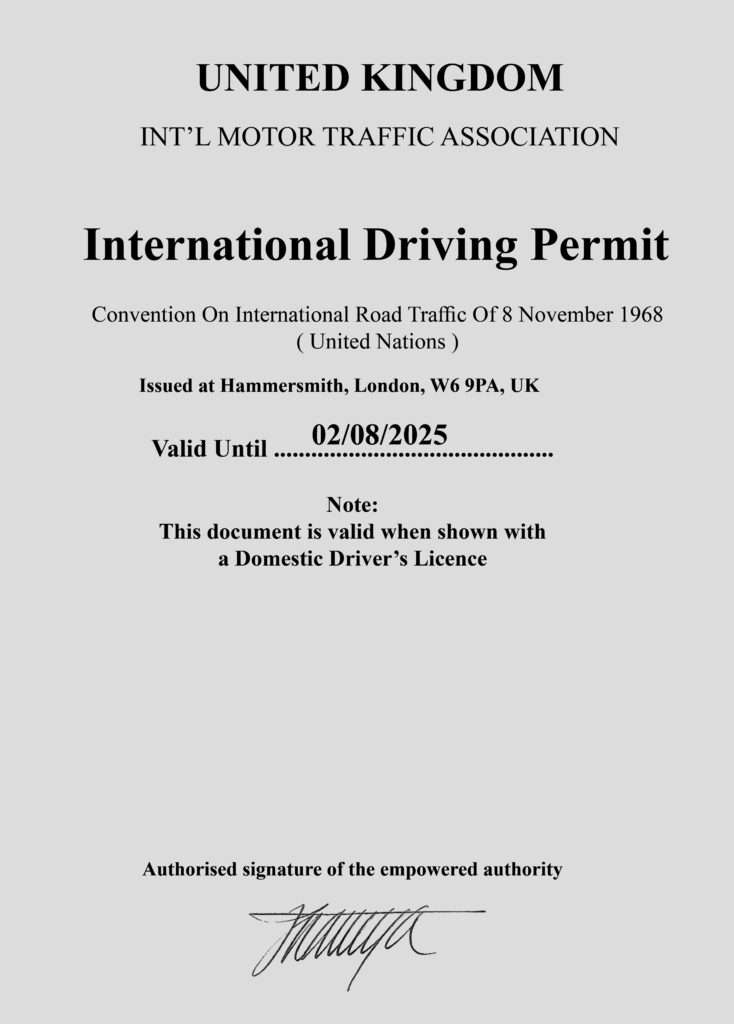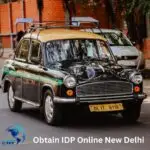Discovering Mongolia: An Introduction
Mongolia, often known as the Land of the Eternal Blue Sky, is a landlocked nation located in East and Central Asia. It shares borders with Russia to the north and China to the south, serving as a bridge between two prominent cultures. With an expansive land area of over 1.5 million square kilometers, Mongolia ranks as the 18th largest country globally, yet it remains one of the least densely populated, offering vast space for its diverse landscapes. From vast steppes and towering mountains to the captivating desolation of the Gobi Desert, Mongolia’s geographical diversity is both remarkable and profound. Mongolia Travel Guide, IDP apply online Mongolia, International Driving Permit Mongolia, International Driving licence Mongolia, International Driving license Mongolia
The rich history of Mongolia spans thousands of years, with a significant chapter marked by the reign of Genghis Khan in the 13th century. Under his leadership, the Mongol Empire emerged as one of the largest contiguous empires in history, establishing trade routes and cultural exchange that shaped not only Mongolia but also a significant part of Asia. This legacy has instilled a deep sense of pride among the Mongolian people, who closely identify with their nomadic roots and traditions.
Today, modern Mongolia endeavors to embrace its historical significance while navigating the complexities of contemporary development. Urban centers such as Ulaanbaatar reflect this balance, showcasing advanced infrastructure alongside traditional ger districts where nomadic lifestyles can still be observed. Mongolian culture, with its unique customs, music, and the renowned Naadam Festival, remains an integral part of daily life, bridging the gap between the past and the present.
In this travel guide, readers will embark on an insightful journey, unraveling the mysteries of Mongolia’s breathtaking natural landscapes and its rich cultural heritage. Prepare to explore a country that honors its nomadic traditions, the legacy of Genghis Khan, and the beauty of the Eternal Blue Sky. Mongolia Travel Guide, IDP apply online Mongolia, International Driving Permit Mongolia, International Driving licence Mongolia, International Driving license Mongolia
The Ideal Time to Explore Mongolia
Mongolia boasts four distinct seasons, each with its own unique allure and activities for travelers. Familiarizing yourself with these seasons can significantly enhance your travel experience, helping you select the best time to explore this captivating country. The climate varies from harsh winters to mild summers, underscoring the importance of timing your trip to make the most of everything Mongolia has to offer.
Spring, spanning from March to May, brings gradually warming temperatures and melting snow. This season is ideal for those who want to witness the blossoming landscapes and the arrival of migratory birds. Additionally, spring festivals are common during this time, providing visitors with the chance to immerse themselves in local culture amid a vibrant atmosphere.
Considered the prime time to visit Mongolia, summer, from June to August, sees soaring temperatures, especially in mid-July, making it perfect for outdoor adventures like hiking and horseback riding. The lush greenery and clear skies also offer stunning landscapes, ideal for photography. Moreover, the Naadam Festival in July showcases traditional sports, cultural performances, and a plethora of local cuisine, making it an indispensable part of Mongolian heritage that should not be missed.
As temperatures cool in September and October, autumn bursts into a breathtaking array of colors. This season is great for trekking and outdoor activities, as the cooler weather provides comfortable conditions for exploration. Autumn is also a time of bountiful harvests, with bustling local markets and a celebratory atmosphere centered around the harvest.
Winter, lasting from November to February, brings frigid temperatures but also unique experiences such as the Winter Ice Festival and opportunities for winter sports. For those willing to brave the cold, the stark beauty of the snowy landscape presents a tranquil scene that few get to witness.
Each season highlights Mongolia’s incredible diversity, making it essential for travelers to consider their preferences and desired experiences when planning a visit. By understanding the seasonal dynamics, you can choose the best time to visit and enjoy the myriad of surprises this remarkable country holds. Mongolia Travel Guide, IDP apply online Mongolia, International Driving Permit Mongolia, International Driving licence Mongolia, International Driving license Mongolia
Planning Your Journey to Mongolia
If you’re considering a trip to Mongolia, a land celebrated for its expansive steppes and vibrant culture, there are various transportation options to choose from. One common way to enter Mongolia is by air, with Ulaanbaatar, the capital city, being the primary destination. Chinggis Khaan International Airport serves as the central hub, offering a multitude of flights from international cities like Beijing, Moscow, and Seoul. For budget-conscious travelers, it’s worth exploring low-cost airlines and seasonal flight options to find the best deals.
For those seeking an adventurous journey and eager to venture off the beaten path, land crossings provide an alternative entry into Mongolia. One popular choice is the train journey from Russia or China, offering travelers a firsthand experience of the region’s breathtaking landscapes. The Trans-Siberian Railway connects to the town of Darkhan in Mongolia, where connections to Ulaanbaatar can be made. Similarly, overland bus routes from Beijing offer a scenic travel experience, although they may take longer compared to direct flights.
When planning your trip, it’s crucial to consider visa requirements, as they can vary significantly based on your nationality. Many travelers are required to obtain a visa before arrival, while some may be eligible for eVisas or visa-on-arrival options. It’s advisable to check the latest regulations on the official embassy website or reputable travel platforms. Additionally, ensure that all your travel documents, including your passport and any necessary vaccination records, are in order well before your departure.
Understanding the various entry points and travel requirements is essential for a seamless travel experience to Mongolia, catering to a range of travelers from budget-conscious explorers to luxury seekers. Careful planning will ensure you can fully embrace all that this captivating destination has to offer. Mongolia Travel Guide, IDP apply online Mongolia, International Driving Permit Mongolia, International Driving licence Mongolia, International Driving license Mongolia
Top Destinations to Explore
Mongolia is known as the land of the eternal blue sky, offering a myriad of breathtaking destinations that showcase the country’s stunning natural beauty and rich cultural heritage. One must-visit location is Ulaanbaatar, the vibrant capital city. It serves as a vital hub for travelers, providing access to museums, theaters, and historical sites. You can explore the National Museum of Mongolia, which offers insight into the country’s history, and Gandan Monastery, an important religious site housing a giant Buddha statue. Ulaanbaatar also serves as a starting point for excursions to the vast countryside.
Another highlight of Mongolia is the Gobi Desert, renowned for its extraordinary landscapes and unique wildlife. You can experience the vastness of the desert while engaging in activities such as camel trekking and sand dune hiking. The region is also home to significant paleontological sites, where remnants of ancient dinosaurs can be found. Visitors to the Gobi will find desert camps that offer an authentic experience of nomadic life.
Lake Khövsgöl, often referred to as Mongolia’s “Blue Pearl,” is a picturesque destination nestled in the northern region of the country. This lake’s crystal-clear waters are surrounded by rugged mountains and lush landscapes, making it perfect for outdoor activities such as hiking and kayaking. The area is also known for its unique cultural exchanges, where travelers can stay with local families and learn about their way of life.
Finally, the north-eastern Selenge Province is another remarkable destination that travelers should explore. This area features the picturesque Selenge River and provides excellent opportunities for birdwatching and fishing. Along the way, visitors can partake in traditional festivals and immerse themselves in the vibrant cultural practices of Mongolia’s diverse communities. Traveling between these destinations can be accomplished through domestic flights, buses, or rented vehicles, ensuring an enriching experience across this diverse landscape. Mongolia Travel Guide, IDP apply online Mongolia, International Driving Permit Mongolia, International Driving licence Mongolia, International Driving license Mongolia
Exploring Cultural Traditions and Etiquette in Mongolia
Mongolia, often referred to as the land of the eternal blue sky, boasts a rich tapestry of tradition and cultural heritage. As you journey through this remarkable landscape, it’s important to understand and respect the cultural practices and etiquette that shape interactions with Mongolian communities. At the heart of Mongolian culture lies the value of hospitality, a fundamental aspect of daily life for its people. Visitors can expect to be greeted with remarkable warmth and generosity, as hosts strive to ensure their guests feel truly welcomed and at ease.
When meeting someone, it is customary to offer a simple handshake alongside a warm greeting. Showing genuine interest and respect, it’s advisable to inquire about the other person’s well-being and family. Additionally, greetings often involve a slight bow or nod of the head, particularly when meeting elders, emphasizing the deep-seated respect for age and tradition.
A visit to a ger, the traditional Mongolian dwelling, requires adherence to certain customs. Guests should enter with their right foot first, symbolizing good luck. It’s important to avoid sitting on the central supports of the structure, as this is considered disrespectful. Furthermore, removing shoes before entering the living space is a gesture of respect.
An essential aspect of Mongolian culture is the custom of offering airag, or fermented mare’s milk, to guests. This traditional beverage is often served during meals or special occasions. Accepting the offer is a sign of respect, but it’s important to express gratitude before taking a sip. Understanding and embracing these cultural intricacies will undoubtedly enrich your experiences and interactions with local communities in Mongolia. Mongolia Travel Guide, IDP apply online Mongolia, International Driving Permit Mongolia, International Driving licence Mongolia, International Driving license Mongolia
Exploring Adventure Activities in Mongolia
Mongolia, with its vast and striking landscapes, offers an array of adventure activities for those seeking thrills and nature enthusiasts alike. One of the most sought-after pursuits is trekking, allowing visitors to fully immerse themselves in the untouched beauty of the Mongolian wilderness. The expansive steppes and rugged mountains provide a variety of trekking routes suitable for both beginners and seasoned hikers. Notable trekking areas include the Altai Mountains and the Khangai Mountain range, where breathtaking views and diverse wildlife await.
For those who prefer two wheels, mountain biking is an exhilarating way to discover Mongolia’s diverse landscapes. From the serene beauty of the Khuvsgul Lake region to the expansive Gobi Desert, mountain biking tours offer an adventurous experience, allowing riders to traverse through varied terrains and awe-inspiring scenery. Several local operators provide guided tours catering to different skill levels, ensuring a safe and enjoyable experience for everyone.
Moreover, the Gobi Desert is renowned for unique experiences such as camel and horseback trekking. These traditional modes of transport not only offer insight into Mongolia’s rich nomadic culture but also provide the opportunity to explore areas often inaccessible by vehicle. Tours typically range from a few hours to several days, offering a chance to witness spectacular landscapes, local flora, and fauna.
Fishing and birdwatching are also popular among nature enthusiasts. Mongolia’s rivers and lakes are home to a variety of fish species, while its diverse avian population lures birdwatchers from around the globe. Visitors can join guided tours that combine adventure and wildlife watching, ensuring an engaging and safe experience.
When partaking in adventure activities in Mongolia, safety should be a top priority. While tour operators often provide essential gear and guidance, adventurers should also consider factors such as weather conditions and personal fitness levels. With the right preparation and caution, the opportunity to explore Mongolia’s majestic landscapes is truly rewarding. Mongolia Travel Guide, IDP apply online Mongolia, International Driving Permit Mongolia, International Driving licence Mongolia, International Driving license Mongolia
Mongolian Food and Drink
The cuisine of Mongolia is known for its simplicity and reliance on the natural resources available in the region. Staple foods such as mutton, dairy products, and grains form the backbone of the country’s culinary landscape. Influenced by the harsh climate and nomadic lifestyle, traditional Mongolian diet revolves around meat and dairy.
One of the most iconic dishes in Mongolia is buuz, steamed dumplings filled with minced meat, often seasoned with garlic and onion. Another popular dish is khuushuur, a fried version of the dumpling typically filled with meat and served with dipping sauce. Both dishes are commonly enjoyed during festivals and gatherings, making them significant to Mongolian culture and representing the traditional cooking style passed down through generations.
Dairy plays a pivotal role in Mongolian gastronomy, with products like airag (fermented mare’s milk) and a variety of cheeses being essential. Airag is often consumed during the summer months, serving both as a refreshment and a source of nourishment. Other dairy products include yogurt and curds, which are commonly part of everyday meals.
When dining in Mongolia, it is customary to greet hosts with a respectful gesture, and guests are encouraged to try all the food offered. Eating is often communal, reflecting the importance of community and hospitality in Mongolian culture. Traditional meals can be enjoyed in local restaurants or yurts, where one can experience authentic Mongolian home cooking.
For those looking to savor genuine Mongolian cuisine, cities like Ulaanbaatar are home to numerous eateries serving traditional dishes. Establishments that specialize in Mongolian BBQ or offer a selection of dumplings are particularly recommended for an immersive culinary experience. Mongolia Travel Guide, IDP apply online Mongolia, International Driving Permit Mongolia, International Driving licence Mongolia, International Driving license Mongolia
Where to Stay in Mongolia: Your Accommodation Options
Mongolia provides a wide range of accommodation options to suit different budgets and travel preferences. Ulaanbaatar, the capital, is an excellent choice for travelers seeking urban comfort. Visitors can choose from a variety of hotels, ranging from luxury options like the Shangri-La Hotel and the Holiday Inn to more budget-friendly choices. These hotels offer modern amenities, making them ideal for those seeking convenience and comfort. However, if you’re looking for a more authentic experience, consider staying in traditional ger camps located in rural areas. Run by local families, these camps allow you to immerse yourself in Mongolian culture, with traditional meals and local hospitality. While offering a peaceful environment and picturesque landscapes, it’s important to note that the facilities may be more basic compared to urban accommodations.
Another option worth exploring is guesthouses, which provide a more community-oriented atmosphere. Found in both Ulaanbaatar and rural regions, guesthouses offer a homely setting where travelers can connect with hosts and fellow tourists. While the facilities are simpler compared to hotels, guesthouses often provide insights into local culture and guidance on activities. It’s essential to book ahead during peak seasons to secure a place, especially in popular tourist areas. Whether you choose a luxurious hotel, a traditional ger camp, or a cozy guesthouse, Mongolia offers a variety of accommodations to enrich your journey.
Traveling to Mongolia necessitates careful attention to health and safety to guarantee a pleasant and secure trip. It’s crucial to consult a healthcare professional well in advance to receive required vaccinations, including Hepatitis A and B, Typhoid, and Tetanus. Carrying a basic first aid kit is also advisable for addressing minor health issues while in remote areas.
Safety is paramount in Mongolia’s expansive landscapes, especially in isolated regions. Always share your travel plans with someone, particularly when heading to rural areas or embarking on trekking activities. Opting for guided tours is recommended as local guides possess vital knowledge of the terrain and cultural aspects, enhancing safety and the overall experience.
Understanding local transportation options is vital for effective navigation. While public transport is available, it might be irregular, especially in rural settings. Consider hiring a driver familiar with local roads or utilizing tour companies that offer transportation services. Familiarity with the Cyrillic alphabet is also beneficial for reading signs and understanding directions.
The primary language spoken in Mongolia is Mongolian, but English is increasingly prevalent in urban areas like Ulaanbaatar. Having translation applications on your smartphone can aid in basic conversations. Additionally, download necessary offline maps before traveling, as internet access can be limited in remote regions.
Essential items to pack include sturdy footwear for hiking, layered clothing for varying temperatures, and a reliable water filtration system. Familiarize yourself with local emergency numbers, such as 102 for police and 103 for medical assistance, for any unforeseen circumstances. Prioritizing these safety measures and preparations will significantly enhance your Mongolian experience, giving you the confidence to explore the ‘Land of the Eternal Blue Sky’. Mongolia Travel Guide, IDP apply online Mongolia, International Driving Permit Mongolia, International Driving licence Mongolia, International Driving license Mongolia
What you need to rent a car, and how to rent one
As a tourist, you’ll most likely be renting a car (more on that in a bit) for your road trip. Even so, there are certain requirements that you’ll have to check off before you get into it.
- You have to get an International Driver’s Permit. Apply for it online or head to the office — we prefer doing it in person because the queue is pretty short during off-peak hours, and you can get it done on the same day. It’ll cost S$20 and is valid for one year from the date of issue.
- A valid local driver’s license. international driving licence online
- You have to be at least 21 years of age and have held your local licence for a year. A surcharge may be imposed for drivers under the age of 25.
- A passport for identification .
- A credit card in the driver’s name.
How to obtain an international driving permit
The process of obtaining an international driving license directly from an office can be quite challenging and time-consuming. The payment methods involved can also be complex. Therefore, it is recommended to consider applying for an international driving license from IMTA. The application process only takes around 10 to 15 minutes, making it a more efficient option for getting your international driving permit Get Your Online Int’l Driving Permit for the United Kingdom
Your Online Int’l Driving Permit for the United Kingdom
The necessary details required for the application of an International driving permit include:
– Full Name
– Email & Phone Number
– Current Address
– Place of Birth
– National Driver’s License Number
– National Driver’s License Issued Date & Expiry Date
– Picture of Driver’s License & Your Head Shot Photo for Your IDP






